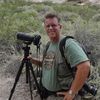Finding the Optimum ISO Speed
Apr 16, 2018 20:51:14 #
I was recently asked what is the optimum ISO of my camera? I did not know that every camera has a different optimum ISO setting. I always try for the lowest ISO setting possible without dropping my shutter speed into shake danger zone. How would one find the optimum ISO of a camera? By the way, I have a Sony SLT-a77.
Apr 16, 2018 21:02:21 #
“Native” IS0 is that which does not require amplification via in body electronics. Each of my bodies lists this in their owner’s manuals. Hope I’m steering towards what you wanted.
Apr 16, 2018 21:16:26 #
In general, lower ISO yields better dynamic range and lower noise, so (with maybe a few exceptions) shooting at the “base ISO” will provide the lowest noise and widest dynamic range. BUT, not at the expense of the correct shutter speed to freeze the action and the aperture to provide the DOF you want. Depending on your camera, noise may not become objectionable until a relatively high ISO and may be ameliorated by noise reduction aps in PP. My suggestion is to pick the shutter speed to freeze the action (unless you want a blurred photo), chose an aperture to provide the DOF you want (shallow to isolate the subject or wide to keep most of the scene in focus without going so high as to create noticeable diffraction) and then accept the ISO that results. Now if that is too high to suit you, then you’ll have to change one of the other two parameters (usually the aperture, because a blurry photo because of a too low shutter speed is useless).
Apr 16, 2018 21:27:20 #
VogtGuy wrote:
I was recently asked what is the optimum ISO of my camera? I did not know that every camera has a different optimum ISO setting. I always try for the lowest ISO setting possible without dropping my shutter speed into shake danger zone. How would one find the optimum ISO of a camera? By the way, I have a Sony SLT-a77.
Here is the signal to noise chart on your camera. Highest number on the vertical scale is the best ISO.
Apr 16, 2018 22:23:57 #
Thank you all. Approx ISO 100 looks to be the best according to the chart. I have always suspected that 100 is the best ISO setting, for lowest noise on every camera.
Apr 16, 2018 22:32:41 #
pesfls wrote:
“Native” IS0 is that which does not require amplification via in body electronics. Each of my bodies lists this in their owner’s manuals. Hope I’m steering towards what you wanted.
This is the right answer. The Optimum ISO Speed is the listed Native Speed. On my Nikon it is ISO 100, although my model shoots lower.
Apr 16, 2018 22:38:46 #
VogtGuy wrote:
Thank you all. Approx ISO 100 looks to be the best according to the chart. I have always suspected that 100 is the best ISO setting, for lowest noise on every camera.
It generally is, but don’t let it keep you from going higher to get the shutter speed and aperture you need to get the shot you want - a classic mistake.
Apr 16, 2018 23:15:18 #
Photography has always been just a hobby of mine, but recently I applied to shoot for a company on a limited part-time basis. They want me to shoot indoors with natural light only. So allow me to submit another question. At what ISO speed would you suspect to start seeing grain in the photo? Could one shoot as high as 1000 and still print photos without noticeable noise?
Apr 16, 2018 23:36:26 #
VogtGuy wrote:
Photography has always been just a hobby of mine, but recently I applied to shoot for a company on a limited part-time basis. They want me to shoot indoors with natural light only. So allow me to submit another question. At what ISO speed would you suspect to start seeing grain in the photo? Could one shoot as high as 1000 and still print photos without noticeable noise?
Not “grain”, noise, but your point/question is well taken, and the answer is it depends on several things: the size of your camera’s sensor and which camera, how old it is (technology improves over time), how much noise you find acceptable, the noise reduction SW you use in post processing, and how carefully you expose your shots. I shoot a full frame Canon and I regularly shoot at ISO 3200-6400 and often at 10,000-12,800 indoors in low light without noticeable noise. I do use mild noise reduction SW in post and I am careful not to underexpose (which is more detrimental with some cameras than others). As a very broad statement (which I’m sure will be debated), an APS (crop camera) will be about 1 to 1-1/2 stops worse (depending on the body) and a M43 will be about 2 to 2-1/2 stops worse and so on as the sensor size decreases. Take a look at the chart below the graph on this site to see how your body compares at low light high ISO performance, but I would be comfortable shooting at ISO 10,000-12,800 (if necessary) on a FF, 5,000-6400 on a crop body and 3,200 on a M43. There will be exceptions (shooting at ISO 16,000 on a crop body with heavy noise reduction or 25,000 with a Nikon D5), but that’s a good range. The net-net is, don’t let shooting at higher ISOs scare you off. Shooting at ISO 1,000 with a modern camera with a decent sized sensor should not be an issue.
http://www.photonstophotos.net/Charts/PDR.htm
Apr 17, 2018 00:11:07 #
Thank you all again. I really didn't understand native speed or ISO until tonight. You all taught me a great deal, and I thought I understood it before I was asked: "What ISO can your camera shoot without noise?"
I have a better understanding now.
I have a better understanding now.
Apr 17, 2018 07:23:33 #
You'll get a variety of answers to this one. However, the reality of the situation is that of using the ISO that provides you the shutter speed and aperture that you need for that photograph. The rest is all applicable to lab testing and that doesn't always indicate what the real world requires.
--Bob
--Bob
VogtGuy wrote:
I was recently asked what is the optimum ISO of my camera? I did not know that every camera has a different optimum ISO setting. I always try for the lowest ISO setting possible without dropping my shutter speed into shake danger zone. How would one find the optimum ISO of a camera? By the way, I have a Sony SLT-a77.
Apr 17, 2018 07:42:35 #
VogtGuy wrote:
Photography has always been just a hobby of mine, but recently I applied to shoot for a company on a limited part-time basis. They want me to shoot indoors with natural light only. So allow me to submit another question. At what ISO speed would you suspect to start seeing grain in the photo? Could one shoot as high as 1000 and still print photos without noticeable noise?
Your best option at any ISO is to do noise reduction when post processing. Topaz DeNoise works well and is my preference but there are other programs that are similar.
Correct exposure will minimize noise with most cameras. Invariant sensors are the exception.
This image was taken at ISO 1600. http://www.uglyhedgehog.com/t-524377-1.html
Apr 17, 2018 07:49:34 #
VogtGuy wrote:
Thank you all. Approx ISO 100 looks to be the best according to the chart. I have always suspected that 100 is the best ISO setting, for lowest noise on every camera.
The graph shows 2 points below ISO 100. Check the settings and try some shots. The best person to answer some of your questions is the one behind your camera.
Apr 17, 2018 07:58:20 #
VogtGuy wrote:
Photography has always been just a hobby of mine, but recently I applied to shoot for a company on a limited part-time basis. They want me to shoot indoors with natural light only. So allow me to submit another question. At what ISO speed would you suspect to start seeing grain in the photo? Could one shoot as high as 1000 and still print photos without noticeable noise?
In my opinion you are dealing with an individual that has limited photographic knowledge. Artificial light or the combination of natural and artificial light when properly done only enhances an image and increases the range of opportunity in diverse conditions.
Apr 17, 2018 08:45:32 #
VogtGuy wrote:
I was recently asked what is the optimum ISO of my camera? I did not know that every camera has a different optimum ISO setting. I always try for the lowest ISO setting possible without dropping my shutter speed into shake danger zone. How would one find the optimum ISO of a camera? By the way, I have a Sony SLT-a77.
The lowest ISO on any digital camera is the optimum ISO. So if it can go as low as ISO 100 that is the best. My Canon 5D Mark IV is best at ISO 100 but when Highlight Priority is turned on 200 is the best.
That being said, if you need to adjust your ISO for more light sensitivity, then certain cameras do have better native ISO settings than others - such as Canon. Canon ISO has the best performance at certain settings than others. Such as: when needing more sensitivity instead of ISO 400, Canon might work best at ISO 320. On most Canon cameras, the best ISO performance is achieved at settings of 160,320,640,1250,2500,5000 and so on instead of 100,200,400,800,1600,3200,6400. This is what Canon says.
If you want to reply, then register here. Registration is free and your account is created instantly, so you can post right away.







